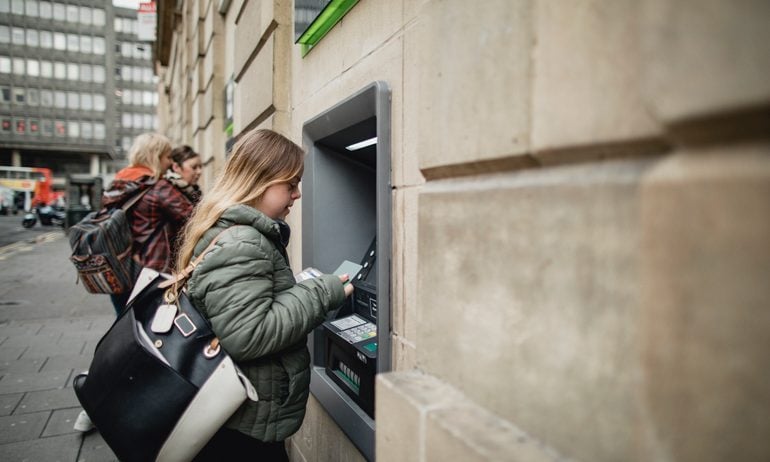How the SVB Collapse Still Ripples Through Banking, 1 Year Later
Five banks failed last year, including Silicon Valley Bank. Keeping your money FDIC-insured goes a long way to prepare you for any future bank collapse.

Many, or all, of the products featured on this page are from our advertising partners who compensate us when you take certain actions on our website or click to take an action on their website. However, this does not influence our evaluations. Our opinions are our own. Here is a list of our partners and here's how we make money.
As he put his toddler to sleep on March 9, 2023, Sam Schiller, cofounder of the startup Carbon Yield, exchanged late-night texts and phone calls with his cofounder, an investor and his legal team to figure out what to do as their bank, Silicon Valley Bank, seemed about to fail.
“While it seemed pretty clear that we should get our money out of SVB fast, no one really talks about where you might actually put that money. As an early stage startup, we did not have multiple bank accounts to wire between,” Schiller said in an email. He and his team decided to move the company’s deposits as soon as they could to the biggest bank they could access. SVB collapsed the next day.
Bank failures like the kind Schiller experienced aren’t common, so the scale of collapses set off by Silicon Valley Bank last year caused shock waves in the industry. Risks of more collapses in 2024 aren’t off the table either. Here’s a look back at last year’s bank closures — and a look forward with tips so you can be prepared if a bank failure affects you.
The story of bank failures in 2023
Early in the year, interest rates were rising quickly as the Federal Reserve raised its benchmark rate multiple times to fight inflation. This led to decreased value for existing bonds and higher yields for new bonds, a discrepancy that negatively impacted some banks with large bond portfolios like SVB.
On March 8, 2023, SVB announced that it had sold about $21 billion of its bond portfolio at a whopping $1.8 billion loss. Panic that the bank wouldn’t be able to meet its cash needs ensued, causing a bank run, where customers withdrew their cash in large numbers. Two days later, SVB was done. At the time, it was the second-largest bank failure in U.S. history. It lost that title to First Republic Bank a few months later.
Two more notable banks collapsed shortly afterward after reportedly facing problems related to the financial stress of a high interest rate environment combined with customers withdrawing significant amounts of money. Signature Bank, based in New York, closed on March 12, and San Francisco-based First Republic Bank shut down on May 1. The last two collapses of the year were smaller regional banks that shut down in July and November. Altogether, there were five bank failures in the U.S. in 2023.
Regulators prevented a broader financial crisis by choosing to protect all of the deposits of SVB and Signature Bank beyond the standard Federal Deposit Insurance Corp. insurance policy of $250,000 per depositor, per bank, per account ownership category. First Republic Bank customers were also safeguarded as Chase took ownership of the bank and guaranteed all funds, both insured and uninsured. Later, the Federal Reserve created a program to provide loans of up to one year to institutions struggling to meet their customers’ cash needs in the hopes of preventing bank runs.

Member FDIC
Forbright Bank Growth Savings

4.25%
$0

Member FDIC
Axos ONE® Savings

4.66%
$1,500

Member FDIC
Varo Savings Account

5.00%
$0

Member FDIC
E*TRADE Premium Savings

4.00%
$0
Risks of regional bank failures linger
Despite the efforts regulators made last year to ensure faith in the banking system, regional banks still face major risks in 2024.
Two factors make regional banks particularly vulnerable: the continued high-rate environment and commercial real estate loan losses. The pandemic-related increase in hybrid working patterns and the decline of property values in office buildings may result in $80 billion to $160 billion in bank losses and put anywhere from dozens to more than 300 regional banks at risk of failing, according to a December 2023 working paper by the National Bureau of Economic Research. The paper states how these loan losses wouldn’t lead to bank failures in a low rate environment such as the one in early 2022. But the current high rates, even if they don’t go up, restrict banks’ ability to recover from sizable loan defaults.
There’s already been at least one bank showing shakiness in 2024. In early February, Moody’s, a credit rating agency, downgraded New York Community Bank's issuer ratings to junk status, citing the bank’s unexpected loan losses in its New York commercial and multifamily real estate, as well as governance issues. The bank responded with a press release to confirm its deposit stability, stating that 72% of total deposits are insured or collateralized.
How to prepare for a bank collapse
“It was certainly a wild moment when we didn't know when we would have access to our funds again, and how long before the FDIC would step in and what that process would look like,” Andrew Jernigan, CEO of Insured Nomads, said in an email about his experience during the SVB collapse. “The unknowns were the biggest disruption,” he said.
If you want to prepare for a worst-case scenario, here are some tips to keep in mind.
Make sure your deposits are fully covered by federal insurance. If you’re a customer at a chartered bank, your deposits will be insured by the FDIC. If you’re a member of a credit union, your deposits will be covered by the National Credit Union Administration. Both of these agencies insure up to $250,000 per depositor, per financial institution, per account ownership type.
Take other routes to insure more than $250,000 in deposits. Consider opening a joint account with your spouse or another trusted family member. This boosts your overall federal insurance coverage to $500,000. Or spread your funds around to multiple banks or credit unions, a route that Jernigan and Schiller recommend after their experience with SVB.
Consider staying through a merger. If your bank has failed and is going to be merged with or acquired by another bank, the best option might be to stick around. You may like what they have to offer. If you find the bank offerings or customer service to be unsatisfactory, you can always open a new account elsewhere without feeling rushed.











